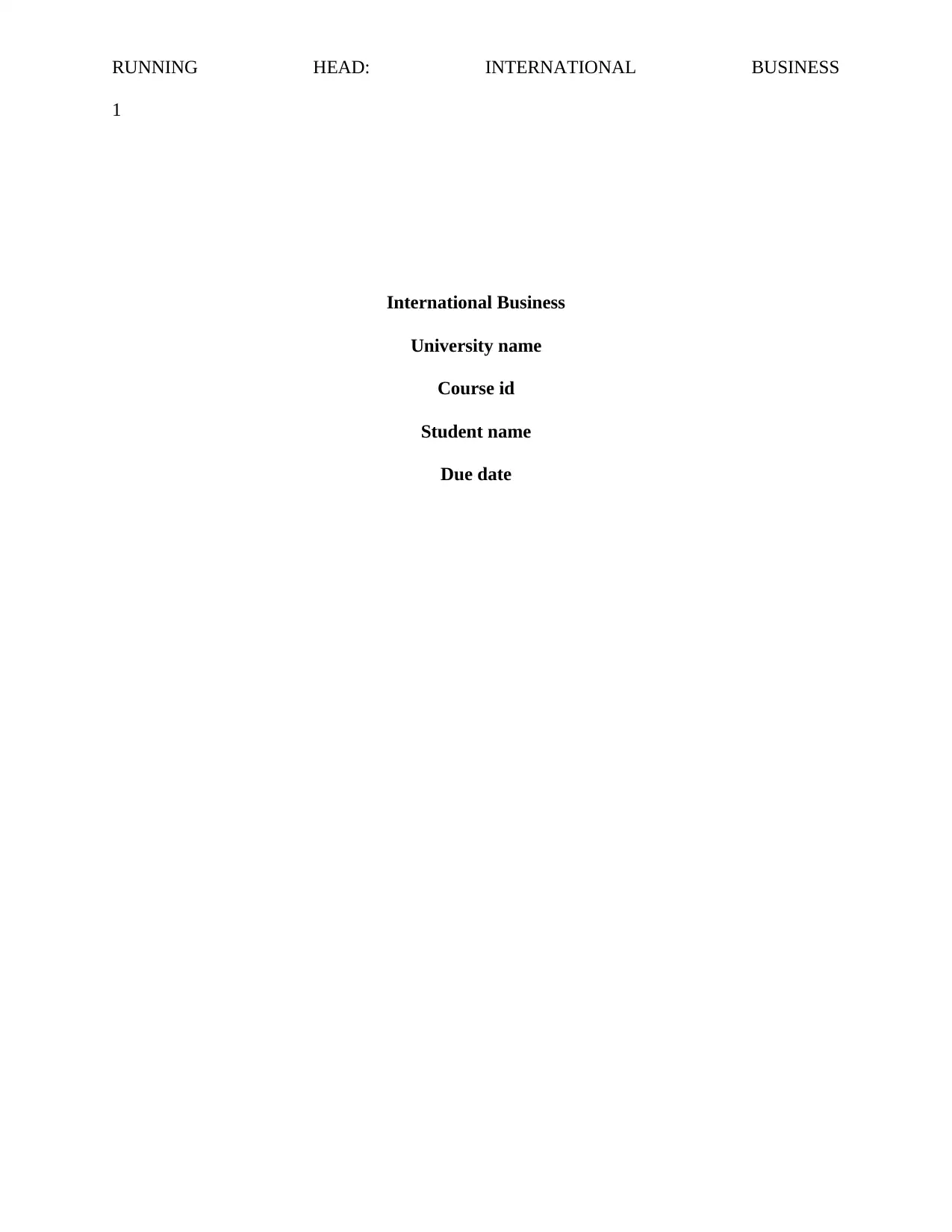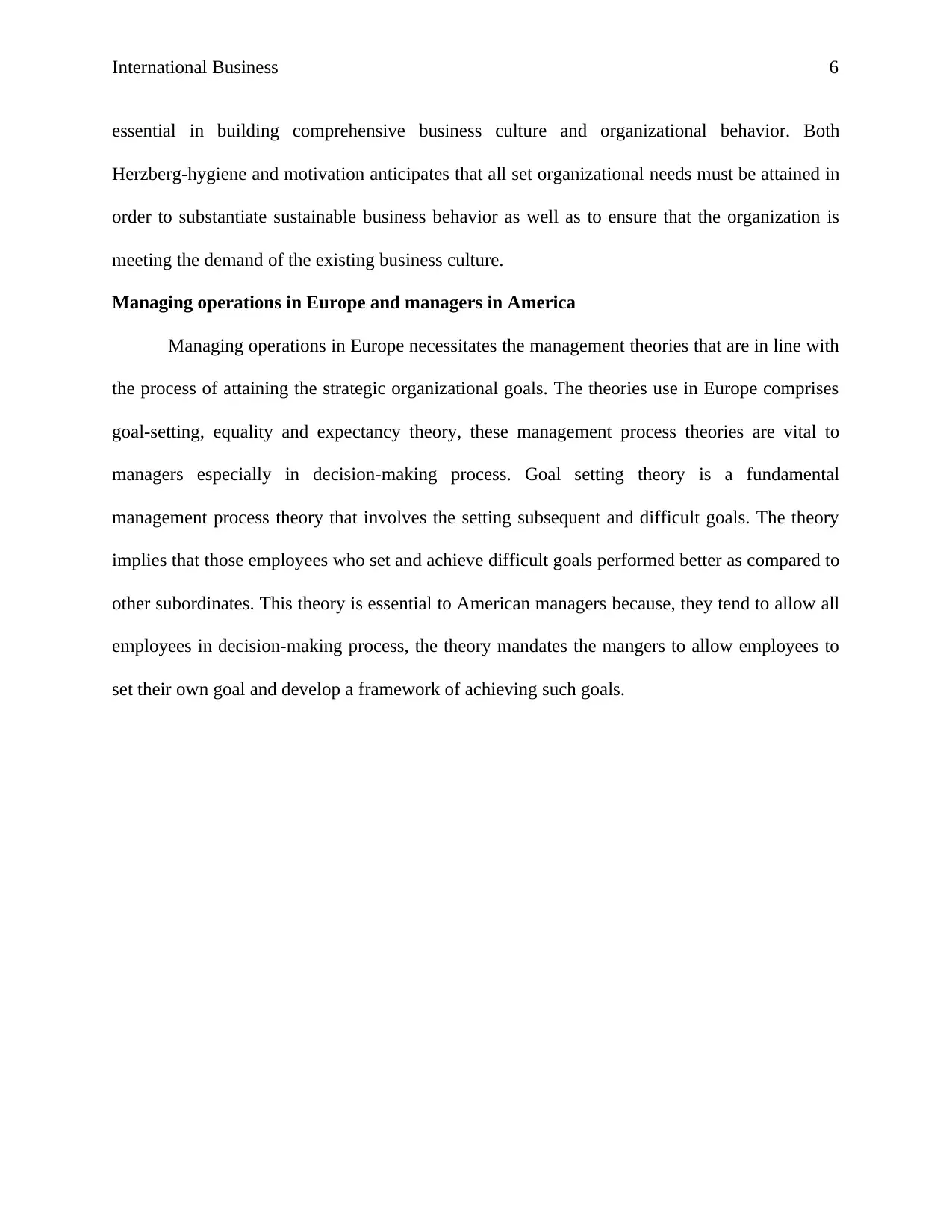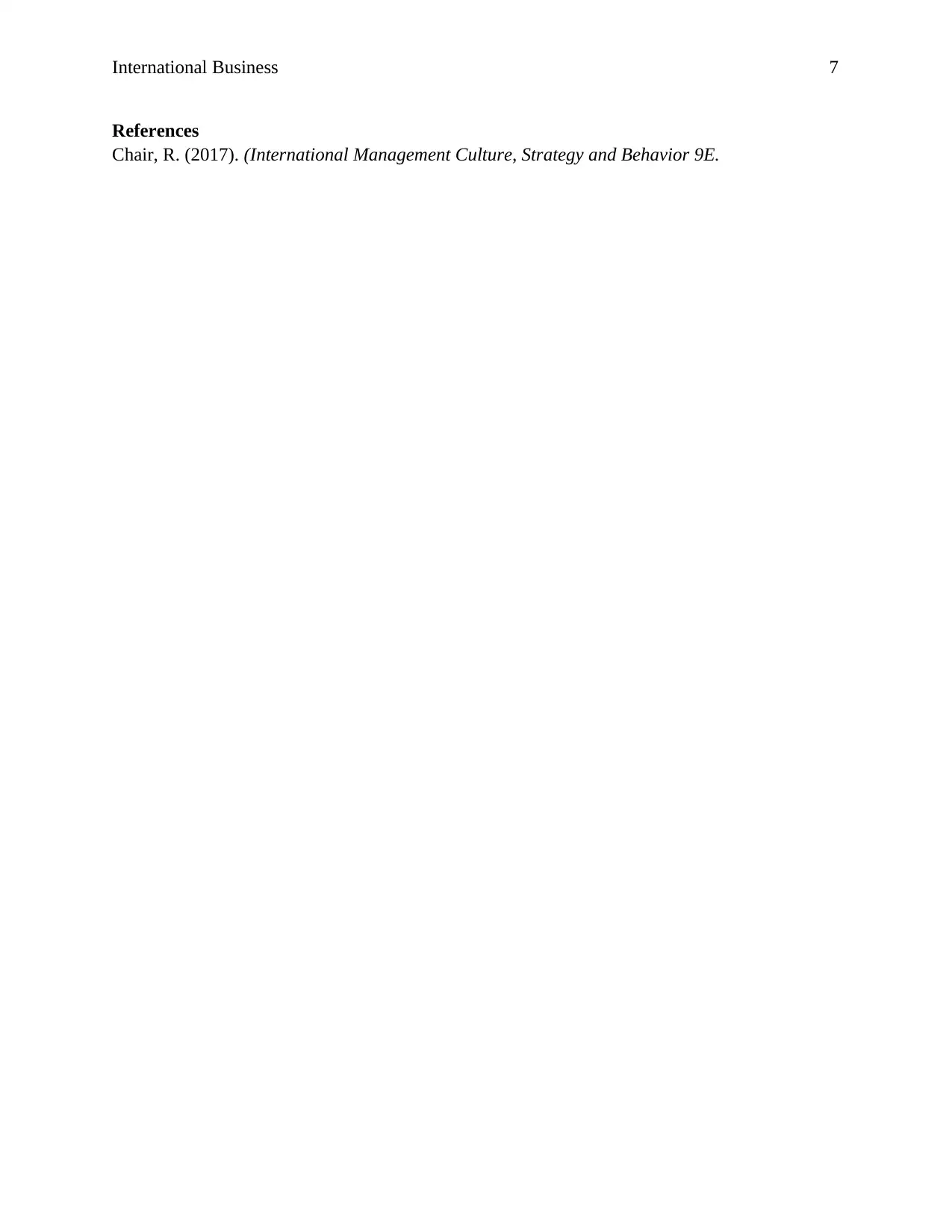Cultural Impact on Toyota's International Business Practices
VerifiedAdded on 2023/06/15
|7
|1343
|304
Report
AI Summary
This report examines the impact of Toyota's culture on its international business practices, comparing it with Eastern cultural influences. It explores Geert Hofstede's four major dimensions of culture—power distance, uncertainty avoidance, individualism/collectivism, and masculinity/femininity—to highlight the differences between US and Japanese management, operations, and work cultures. The report also defines the four basic predispositions that multinational corporations (MNCs) have toward their international operations: polycentric, ethnocentric, geocentric, and regioncentric. Additionally, it discusses the value of Herzberg's Two-Factor Theory (hygiene and motivators) in the context of Japanese and UK business environments, and evaluates the relevance of process theories like equity theory, goal-setting theory, and expectancy theory for American managers operating in Europe. The analysis concludes by drawing insights on how cultural behavior impacts international business strategies.

RUNNING HEAD: INTERNATIONAL BUSINESS
1
International Business
University name
Course id
Student name
Due date
1
International Business
University name
Course id
Student name
Due date
Paraphrase This Document
Need a fresh take? Get an instant paraphrase of this document with our AI Paraphraser

International Business 2
International Business
International business culture between Eastern and Japanese culture
The international business comprises the implementation of new measures that are
emerging and can influence the decisions of managers in an organization. International business
is explained as the process of conducting business activities, ideas and goal across the national
boundaries. Business enterprises that operate across their national boundaries consider
international business approach as the substantial theory of conducting business activities.
International business implies the combinations of different cultures, this influences the
normal business activities conducted by the business firm. Toyota is a Japanese multinational
automotive company, it is headquartered in Aichi, Japan. The company operates in different
regions that have distinctive cultural practices. International business culture affects how the
company conducts its business activities. Roles and responsibilities culture in Japan allows the
employees to have one goal of succeeding, while the eastern culture allows all employees to
make contributions in the decision-making process. The book elaborates on the working styles
that are instigated by the Japanese and Eastern culture.
The Toyota Company in Japan does not allow employees to work at home but the Eastern
culture permits employees to work from their home as they contribute towards decisional making
process of the organization. Meeting help for Toyota Company in Japan and Eastern countries
make great difference, where the Japanese culture permits meetings that take a lot of time as
compared to other culture that takes less time.
Dimensions of culture studied by Geert Hofstede
International Business
International business culture between Eastern and Japanese culture
The international business comprises the implementation of new measures that are
emerging and can influence the decisions of managers in an organization. International business
is explained as the process of conducting business activities, ideas and goal across the national
boundaries. Business enterprises that operate across their national boundaries consider
international business approach as the substantial theory of conducting business activities.
International business implies the combinations of different cultures, this influences the
normal business activities conducted by the business firm. Toyota is a Japanese multinational
automotive company, it is headquartered in Aichi, Japan. The company operates in different
regions that have distinctive cultural practices. International business culture affects how the
company conducts its business activities. Roles and responsibilities culture in Japan allows the
employees to have one goal of succeeding, while the eastern culture allows all employees to
make contributions in the decision-making process. The book elaborates on the working styles
that are instigated by the Japanese and Eastern culture.
The Toyota Company in Japan does not allow employees to work at home but the Eastern
culture permits employees to work from their home as they contribute towards decisional making
process of the organization. Meeting help for Toyota Company in Japan and Eastern countries
make great difference, where the Japanese culture permits meetings that take a lot of time as
compared to other culture that takes less time.
Dimensions of culture studied by Geert Hofstede

International Business 3
Culture is defined as the programming of the minds that differentiate members of one
group from a particular category of people. According to Geert Hofstede cultural dimension are
substantial elements that influence on the functions of management of an organization that
operates across in the international borders, it affects technology transfer, managerial ideology,
managerial attitude and business government relationship. The elements of culture could also act
as the framework for developing competitive advantage in the market. Different culture could
allow the company to increase its market share and on the other hand it can lead to a company to
be seen as a catastrophe and thus remaining at a lower level of conducting business activities.
Power distance
According to Geert Hofstede power distance comprises the process where some members
within and institution believe that powers were not distributed equally, it implies that employees
are working based on the powers given by their seniors. In the US, employees only believe in the
powers that are given to them by the management as compared to the cultural dimension of
Japanese that require every person within an institution to have self-management.
Uncertainty Avoidance
This cultural dimension implies that the people within an organization are feeling
threaten with specific situations, and that they are trying to avoid them. In USA, people are
trying to avoid mistakes while they work within their organizations, while Japanese culture
allows employees to work based on their knowledge.
Individualism and Collectivism
These are the critical aspect of culture that affects the management process of
organizations. Individualism implies the aspect where people look after themselves and their
immediate family while the collectivism is described as a component of culture which employees
Culture is defined as the programming of the minds that differentiate members of one
group from a particular category of people. According to Geert Hofstede cultural dimension are
substantial elements that influence on the functions of management of an organization that
operates across in the international borders, it affects technology transfer, managerial ideology,
managerial attitude and business government relationship. The elements of culture could also act
as the framework for developing competitive advantage in the market. Different culture could
allow the company to increase its market share and on the other hand it can lead to a company to
be seen as a catastrophe and thus remaining at a lower level of conducting business activities.
Power distance
According to Geert Hofstede power distance comprises the process where some members
within and institution believe that powers were not distributed equally, it implies that employees
are working based on the powers given by their seniors. In the US, employees only believe in the
powers that are given to them by the management as compared to the cultural dimension of
Japanese that require every person within an institution to have self-management.
Uncertainty Avoidance
This cultural dimension implies that the people within an organization are feeling
threaten with specific situations, and that they are trying to avoid them. In USA, people are
trying to avoid mistakes while they work within their organizations, while Japanese culture
allows employees to work based on their knowledge.
Individualism and Collectivism
These are the critical aspect of culture that affects the management process of
organizations. Individualism implies the aspect where people look after themselves and their
immediate family while the collectivism is described as a component of culture which employees
⊘ This is a preview!⊘
Do you want full access?
Subscribe today to unlock all pages.

Trusted by 1+ million students worldwide

International Business 4
are belonging to specific groups as they look each other with the main objective to gain loyalty.
Business management process in the US is managed with the individualism culture dimension
because people want to protect what they have only as compared to in Japan where people are
working together to gain loyalty, particularly on the employee who works in an organization.
Masculinity and Femininity
Masculinity and Femininity are the cultural dimensions that are critical in the
management process. According to Geert Hofstede, masculinity comprises the cultural values in
the society such as money and gaining more recognition, this is the cultural dimension embrace
by the Japanese workers and management. While the femininity, is explained as the cultural
dimension that comprises the cultural values where female ideologies are mostly considered, this
is mostly done in US, affecting the managerial activities of an organizations.
Basic predispositions of managing across cultures
Managing across different cultures compels the organizational management to consider
comprehending on similarities as well as the cultural different that exists. According to Geert
Hofstede, the Mult National Corporations executive are mandates to conduct their management
functions as well as the organizational control by considering the market values which they are
operating. The predispositions of managing across culture implies the theoretical concepts that
advocate the consideration of the cultural values in a particular market.
Polycentric predispositions
The polycentric predispositions is based on the management strategic approach which the
decisional making process are made to the interest of the existing market that the corporations
are operating.
Ethnocentric predispositions
are belonging to specific groups as they look each other with the main objective to gain loyalty.
Business management process in the US is managed with the individualism culture dimension
because people want to protect what they have only as compared to in Japan where people are
working together to gain loyalty, particularly on the employee who works in an organization.
Masculinity and Femininity
Masculinity and Femininity are the cultural dimensions that are critical in the
management process. According to Geert Hofstede, masculinity comprises the cultural values in
the society such as money and gaining more recognition, this is the cultural dimension embrace
by the Japanese workers and management. While the femininity, is explained as the cultural
dimension that comprises the cultural values where female ideologies are mostly considered, this
is mostly done in US, affecting the managerial activities of an organizations.
Basic predispositions of managing across cultures
Managing across different cultures compels the organizational management to consider
comprehending on similarities as well as the cultural different that exists. According to Geert
Hofstede, the Mult National Corporations executive are mandates to conduct their management
functions as well as the organizational control by considering the market values which they are
operating. The predispositions of managing across culture implies the theoretical concepts that
advocate the consideration of the cultural values in a particular market.
Polycentric predispositions
The polycentric predispositions is based on the management strategic approach which the
decisional making process are made to the interest of the existing market that the corporations
are operating.
Ethnocentric predispositions
Paraphrase This Document
Need a fresh take? Get an instant paraphrase of this document with our AI Paraphraser

International Business 5
This ethnocentric predisposition comprises the management concept that allows and
enterprise to implement on the decisions that are made by the parent company, this is common in
organization that have market segmentation with centralize decision-making structure.
Geocentric predispositions
This is a predisposition that the business organization is trying to consider and implement
on the international management systems. This is a philosophy of management that is used by
the companies that working towards segmenting their operations, especially to new business
environment where cultural values are irregular.
Regioncentric predispositions
It is the philosophy of managing across different cultures where the management of an
institution is focusing on the interest of the existing cultural values, where they belief on the
importance of the existing business and cultural values.
Herzberg Two factor theory
The Two factor theory is a strategic management approach that entails hygiene and
motivation factor. Motivation is a major factor that is focusing to improve employees
productivity and efficiency based on the experience and skills possessed. It is an element that is
comprising on the observation as well as the recognition that an employee receives after
working. The Japanese companies differ with the UK companies in terms of motivation their
employees. Japanese companies give their employees bonus after they achieve particular task as
compared to UK where they always motivate their employees with their job context.
The Herzberg-hygiene is a strategic approach that comprising the process of considering
the job context variables such as company and administrative policies, technical supervisions and
salaries. According to Geert Hofstede, both management theories have similarity that makes are
This ethnocentric predisposition comprises the management concept that allows and
enterprise to implement on the decisions that are made by the parent company, this is common in
organization that have market segmentation with centralize decision-making structure.
Geocentric predispositions
This is a predisposition that the business organization is trying to consider and implement
on the international management systems. This is a philosophy of management that is used by
the companies that working towards segmenting their operations, especially to new business
environment where cultural values are irregular.
Regioncentric predispositions
It is the philosophy of managing across different cultures where the management of an
institution is focusing on the interest of the existing cultural values, where they belief on the
importance of the existing business and cultural values.
Herzberg Two factor theory
The Two factor theory is a strategic management approach that entails hygiene and
motivation factor. Motivation is a major factor that is focusing to improve employees
productivity and efficiency based on the experience and skills possessed. It is an element that is
comprising on the observation as well as the recognition that an employee receives after
working. The Japanese companies differ with the UK companies in terms of motivation their
employees. Japanese companies give their employees bonus after they achieve particular task as
compared to UK where they always motivate their employees with their job context.
The Herzberg-hygiene is a strategic approach that comprising the process of considering
the job context variables such as company and administrative policies, technical supervisions and
salaries. According to Geert Hofstede, both management theories have similarity that makes are

International Business 6
essential in building comprehensive business culture and organizational behavior. Both
Herzberg-hygiene and motivation anticipates that all set organizational needs must be attained in
order to substantiate sustainable business behavior as well as to ensure that the organization is
meeting the demand of the existing business culture.
Managing operations in Europe and managers in America
Managing operations in Europe necessitates the management theories that are in line with
the process of attaining the strategic organizational goals. The theories use in Europe comprises
goal-setting, equality and expectancy theory, these management process theories are vital to
managers especially in decision-making process. Goal setting theory is a fundamental
management process theory that involves the setting subsequent and difficult goals. The theory
implies that those employees who set and achieve difficult goals performed better as compared to
other subordinates. This theory is essential to American managers because, they tend to allow all
employees in decision-making process, the theory mandates the mangers to allow employees to
set their own goal and develop a framework of achieving such goals.
essential in building comprehensive business culture and organizational behavior. Both
Herzberg-hygiene and motivation anticipates that all set organizational needs must be attained in
order to substantiate sustainable business behavior as well as to ensure that the organization is
meeting the demand of the existing business culture.
Managing operations in Europe and managers in America
Managing operations in Europe necessitates the management theories that are in line with
the process of attaining the strategic organizational goals. The theories use in Europe comprises
goal-setting, equality and expectancy theory, these management process theories are vital to
managers especially in decision-making process. Goal setting theory is a fundamental
management process theory that involves the setting subsequent and difficult goals. The theory
implies that those employees who set and achieve difficult goals performed better as compared to
other subordinates. This theory is essential to American managers because, they tend to allow all
employees in decision-making process, the theory mandates the mangers to allow employees to
set their own goal and develop a framework of achieving such goals.
⊘ This is a preview!⊘
Do you want full access?
Subscribe today to unlock all pages.

Trusted by 1+ million students worldwide

International Business 7
References
Chair, R. (2017). (International Management Culture, Strategy and Behavior 9E.
References
Chair, R. (2017). (International Management Culture, Strategy and Behavior 9E.
1 out of 7
Related Documents
Your All-in-One AI-Powered Toolkit for Academic Success.
+13062052269
info@desklib.com
Available 24*7 on WhatsApp / Email
![[object Object]](/_next/static/media/star-bottom.7253800d.svg)
Unlock your academic potential
Copyright © 2020–2025 A2Z Services. All Rights Reserved. Developed and managed by ZUCOL.


